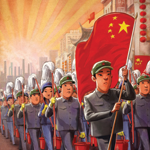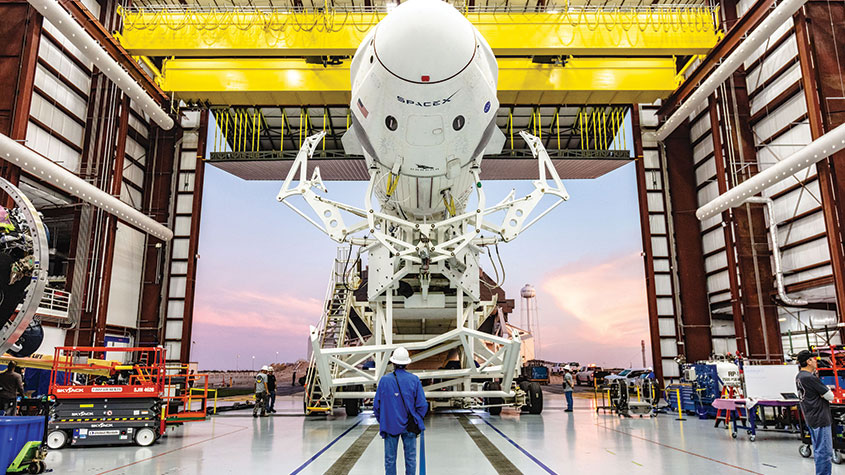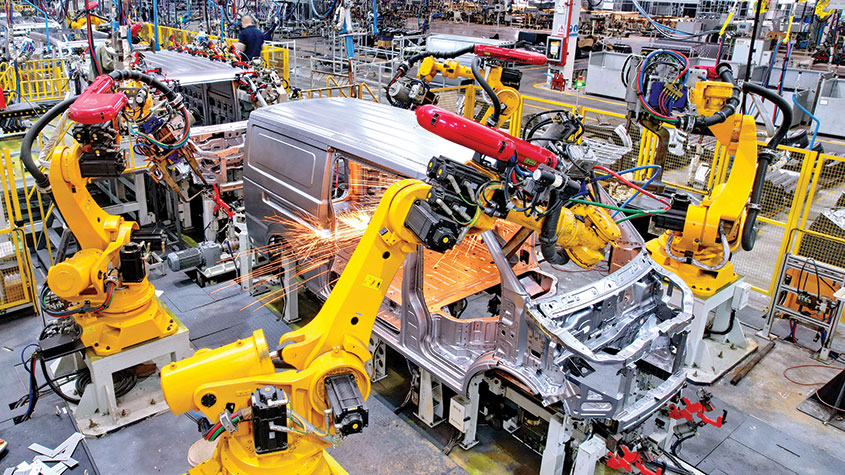Profit from China’s war on pollution
China’s growth has been achieved at the cost of crippling pollution. With Beijing starting to crack down, Matthew Partridge looks at how you can profit, and picks six stocks to buy now.


China's growth has been achieved at the cost of crippling pollution. With Beijing starting to crack down, Matthew Partridge looks at how you can profit.
In the last 35 years, China has changed beyond all recognition. Thanks to Deng Xiaoping's reforms in the late 1970s, which turned the country towards a more market-led economic model, China is on the cusp of being the world's largest economy on some measures, and the world's manufacturing centre.
However, there has been one big downside to all this economic development. China has turned a blind eye to toxic waste and emissions, and consciously chosen the cheapest and dirtiest forms of energy to enable rapid expansion of heavy industry.It's now paying the price in the form of a massive pollution problem.
MoneyWeek
Subscribe to MoneyWeek today and get your first six magazine issues absolutely FREE

Sign up to Money Morning
Don't miss the latest investment and personal finances news, market analysis, plus money-saving tips with our free twice-daily newsletter
Don't miss the latest investment and personal finances news, market analysis, plus money-saving tips with our free twice-daily newsletter
The most obvious issue is poor air quality, largely caused by the use of coal power. The air in all but three cities in China breaches international quality standards. China's capital, Beijing, is regularly covered in smog for days at a time.
One recent spell blanketed even the tallest buildings. Flights were cancelled and companies forced to shut down factories. Meanwhile, in Shanghai, the city authorities recently took the unprecedented step of shutting down local schools.
Increasingly, Chinese people go about their business wearing protective masks ranging from simple paper filters all the way up to industrial grade respirators. And during one particularly bad spell last year, Shanghai's authorities seriously considered forcing people to wear such protection.
These precautions might seem extreme, but judging by health data, Chinese citizens are right to be worried. In 2010 (the latest data available), the World Health Organisation estimates that poor air quality led to the premature deaths of 1.2 million Chinese people.
A study by Professor Michael Greenstone of Massachusetts Institute of Technology suggests pollution has cut life expectancy by 5.5 years similar to smoking a pack of cigarettes a day.
While air pollution is the most visible problem, China's water may be in an even worse state. Firms discharge all sorts of waste into rivers, without treating it first. As a result, over half of China's rivers are classed as poor' or very poor', and a fifth are considered toxic. Even Chinese ministers call it "grim".
This is having a serious impact on the cities, towns and villages that depend on this water for drinking and washing. One of the most notorious cases is the river Huai. This river is so polluted that some villages next to its tributaries aren't able to open their windows because of the smell.
The water can't even be used for irrigation, as it destroys any crops it touches. The river, and others just as bad, have been held responsible for abnormally high cancer rates and birth defects and mutations.
Air and water pollution are responsible for the fact that a third of Chinese children have high levels of lead in their blood (which has been linked with learning problems and criminal behaviour).
And the poisoning of much of the water supply has squeezed China's already hard-pressed water resources even harder. Already 60% of China's cities face regular water shortages.In 200 cities it's a critical problem.
Beijing takes action
In the past, the Chinese population has been prepared to tolerate the pollution as a price worth paying for rapid growth. And even if it didn't, the state's security apparatus was on hand to crack down on dissent. But this arrangement is starting to break down.
This is partly because the problem is getting so bad that no amount of growth can compensate for the high costs involved. But perhaps ironically the success of China's growth policies has also contributed, creating an ever-growing urban middle class.
These people are used to increasing living standards and are therefore more concerned about the environment in which they are trying to bring up their families. Overall, surveys suggest that up to 80% of people now think that improving the environment is a more pressing issue than economic growth.
This has led to an increase in the number of environmental protests. While the government doesn't keep official figures on protests (and the media tends not to report them), Yang Chaofei, of the Chinese Society for Environmental Sciences, thinks that the number of protests is increasing at a rate of 30% a year.
And these aren't just small villages or easily dismissed rallies we're talking about last year there was a major protest in Shanghai.
While the government continues to crack down on them, it also realises that repression alone is an unsustainable policy, particularly as economic growth is also set to slow markedly, further increasing the potential for discontent among the population.
But perhaps more important than the woes of the ordinary middle-class Chinese man or woman in the street is the fact that the elites are having a tough time of it too. Regardless of your position in the party hierarchy, or your level of wealth, things are so bad that you simply can't escape the impact of pollution in China.
Managers and executives are quitting the country in droves, or simply refusing to relocate to China in the first place. Indeed, a survey by the American Chamber of Commerce in Beijing estimates that nearly half of all multinational firms are having smog-related staffing problems, up from just a fifth in 2010. Extra 'hardship' pay to compensate for the foul air workers regularly endure is increasingly common.
It's not just multinationals. Even domestic Chinese entrepreneurs and business leaders are moving to other countries because of the environment, according to a report by the Chinese Academy of Social Sciences. And those who can't move country are instead moving to the few cities with relatively better air quality.
Meanwhile, the political elite, including the Politburo itself, has to spend large sums of money on air purifiers in an attempt to stop the smog from penetrating its offices and homes.
All told, it's no surprise that Beijing is finally taking action. A year and a half ago it released its first ever strategy to reduce air pollution in three key regions. This year, in March, prime ministerLi Keqiang formally declared a "war on pollution".
The Chinese government has also started the process of overhauling both laws and their enforcement to increase the penalties for the biggest polluters. As well as bigger sticks to beat the miscreants, the government is spending huge sums of money oncleaner infrastructure.
New sources of energy
So how will China's big clean up unfold? A key part of the plan to improve air quality is to move away from using coal and oil, which are both highly polluting, towards cleaner sources of energy.
As of 2011, coal power produced 69% of China's energy, with a further 18% coming from oil, according to the most up-to-date figures from the US Energy Information Administration. Hydropower and gas accounted for another 11%, with wind, solar and nuclear amounting to 2% betweenthem. Beijing wants to change that.
It hopes to cut coal's contribution to below 65% of the energy mix within the next three years. It also wants to get 15% of energy from non-fossil sources by 2020 (compared with 10% now).
But thanks to heavy investment in solar power, China may in fact hit this target early. Experts believe that in the last year alone, China may have installed as much as 14 gigawatts (GW) of new solar capacity.
Even more modest estimates of 12GW would mean that China has not only doubled its installed solar capacity, but has also installed more solar capacity in a single year than any other nation has ever achieved.
Wind power resources are also growing quickly, with China on the brink of outstripping the European Union's (EU) total installed capacity. Demand for wind power is so great that domestic firms are constantly trying to develop cheaper, more reliable turbines, creating a virtuous cycle.
The other big energy solution for China is nuclear power. Technically, nuclear is not a renewable resource, but it is virtually emission-free. At a time when countries such as Japan and Germany are moving away from nuclear, China is opening up more and more reactors, using the latest Western technology.
Not content with recently doubling capacity to 14.6GW, Beijing is trying to raise this to 58GW within the next six years. As part of this push, China National Nuclear Power Co Ltd the country's second-largest nuclear company, currently owned by the state is planning to raise cash by listing onthe stock market.
Cleaning up coal and oil
But even at current rapid rates, moving from coal and oil to renewables will take a long time. More critically, Chinese energy consumption is growing so fast that the amount of coal burned will still increase in absolute terms, even if it forms a smaller proportion of the overall energy mix'.
'Peak coal' is unlikely to take place before 2020, according to analysts at Citi Research. So, the government is also trying to cut the amount of pollution pumped out of power stations by using scrubbers', which remove the sulphur dioxide that causes smog, and carbon capture, which involves storing carbon emissions underground.
The government is also forcing oil-powered plants, which also have a poor pollution record, to install similar technology.
Although scrubbers and filters are standard on most new power stations and heavy industrial plants, many firms still turn them off to save money. Power companies argue that state regulation of prices means they would quickly go out of business if they didn't and ineffective penalties also mean it is often cheaperto ignore regulations and pay fines.
So, Beijing is ramping up fines, but also deregulating the energy market, to give plants more incentive to obey the rules.
Cleaner cars
While power plants and heavy industry are major sources of pollution, the growing number of cars on China's roads is also a concern. Researchers at two top universities, Tsinghua and Peking, think that between a fifth and a third of Beijing air pollution is due to car emissions.
The government is taking this very seriously including strongly hinting that it might cap the number of new car sales. Authorities in the cities of Hangzhou and Tianjin have already imposed controls. The big Chinese car trade association expects several other cities to follow suit.
This is obviously bad news for the wider car industry. But it could be good news for one specific niche electric cars. While several cities and regions currently offer subsidies to entice potential buyers, these have usually been limited (either explicitly or implicitly) to those produced locally.
However, the central government is putting pressure on local government to broaden eligibility, which should help foreign manufacturers tap in to the huge potential demand for emissions-free cars.
The Chinese government is also forcing cars, trucks and busses to use catalytic converters, which reduce the pollutants emitted by producing a chemical reaction that make them less toxic.
These new rules, brought in last year, already apply in the capital, and will shortly expand to cover the rest of China. Parallel standards covering petrol have also been announced and will appear first in major cities. The overall aim is to catch up with the standards in force in the EU by 2018.
We look at some of the best ways to profit from these three major war on pollution' themes below.
The six stocks to buy now
High levels of water pollution mean plenty of demand for firms providing waste water treatment facilities. We highlighted some global options in our cover story on water last week, but within China itself, there are a few interesting-looking plays.
While the government regulates China's water prices, they are being raised across the board to allow firms to make comfortable returns on their investments. China Water Affairs Group (HK: 855) should benefit.
As well as running a conventional water supply business, it has been expanding its water treatment segment, especially in cities that have privatised their water supplies. It trades at 9.7 times 2015 earnings.
Beijing Enterprises Water Group (HK: 371) is more aggressively valued, trading at 20.5 times next year's profits. However, this looks justified by its planned acquisition of capacity from its parent group, Beijing Enterprises Holdings, and other firms. It also has a growing international presence it's already running plants in Portugal and Malaysia.
This should see sales grow by 33% in the next two years (in HK$). At the same time, profit margins are rising, enabling it to deliver a strong return on equity. Based on future cash flow, Standard Chartered thinks the share price could rise by a further 20% before it hits fair value'.
Tougher regulations surrounding catalytic converters, backed up by a pledge to remove cars that don't comply from the road, should boost demand for platinum, one of the key components in such converters. In the last six months global platinum prices have fallen.
However, HSBC thinks that demand for vehicles, along with supply constraints (due partly to problems in the South African mines that supply the majority of platinum), will push prices from their current levels of around $1,455 to $1,850 (a 27% increase) in the next two years.
One way to take advantage of this price appreciation is to through ETFS Physical Platinum ETF (LSE: PHPT). This exchange-traded fund (ETF) tracks the spot price of platinum and has annual management costs of 0.49%.
One sector that could benefit from China's drive for more nuclear-generated power is uranium mining. The spot price of uranium has plunged from a peak of $136 per pound in the summer of 2007, to around $30 now.
But Chinese demand, increased interest from India, and Japan restarting its nuclear power plants should push prices up. That's good news for the biggest uranium miner Cameco (NYSE: CCJ), which trades at 17 times 2015 earnings.
As for renewable power, Xinjiang Goldwind Science & Technology Company (HK: 2208) is China's second-largest wind turbine producer, and the third largest in the world. As well as producing turbines it provides advice and management services for power plants and wind farms.
Sales are growing rapidly on the back of strong Chinese demand, while it is cutting costs by bringing more production in-house. It has also developed a turbine especially suited to areas with low wind levels. It trades on a 2015 price/earnings ratio of 17.3.
PetroChina (NYSE: PTR) may not seem the most obvious beneficiary of a crackdown on pollution. However, its natural gas reserves are now nearly equal to its oil reserves. This puts it in a great position to benefit from the Chinese embrace of natural gas as an alternative to coal.
While natural gas is still a fossil fuel, it's cleaner and less directly harmful to human health than coal or oil. PetroChina's refinery profit margins should also get a lift from regulations requiring motorists to use better grades of petrol. It trades at only 9.3 times 2015 earnings.
Get the latest financial news, insights and expert analysis from our award-winning MoneyWeek team, to help you understand what really matters when it comes to your finances.

-
 Why pension transfers are so tricky
Why pension transfers are so trickyInvestors could lose out when they do a pension transfer, as the process is fraught with risk and requires advice, says David Prosser
-
 The political economy of Clarkson’s Farm
The political economy of Clarkson’s FarmOpinion Clarkson’s Farm is an amusing TV show that proves to be an insightful portrayal of political and economic life, says Stuart Watkins
-
 Invest in space: the final frontier for investors
Invest in space: the final frontier for investorsCover Story Matthew Partridge takes a look at how to invest in space, and explores the top stocks to buy to build exposure to this rapidly expanding sector.
-
 Invest in Brazil as the country gets set for growth
Invest in Brazil as the country gets set for growthCover Story It’s time to invest in Brazil as the economic powerhouse looks set to profit from the two key trends of the next 20 years: the global energy transition and population growth, says James McKeigue.
-
 5 of the world’s best stocks
5 of the world’s best stocksCover Story Here are five of the world’s best stocks according to Rupert Hargreaves. He believes all of these businesses have unique advantages that will help them grow.
-
 The best British tech stocks from a thriving sector
The best British tech stocks from a thriving sectorCover Story Move over, Silicon Valley. Over the past two decades the UK has become one of the main global hubs for tech start-ups. Matthew Partridge explains why, and highlights the most promising investments.
-
 Could gold be the basis for a new global currency?
Could gold be the basis for a new global currency?Cover Story Gold has always been the most reliable form of money. Now collaboration between China and Russia could lead to a new gold-backed means of exchange – giving prices a big boost, says Dominic Frisby
-
 How to invest in videogames – a Great British success story
How to invest in videogames – a Great British success storyCover Story The pandemic gave the videogame sector a big boost, and that strong growth will endure. Bruce Packard provides an overview of the global outlook and assesses the four key UK-listed gaming firms.
-
 How to invest in smart factories as the “fourth industrial revolution” arrives
How to invest in smart factories as the “fourth industrial revolution” arrivesCover Story Exciting new technologies and trends are coming together to change the face of manufacturing. Matthew Partridge looks at the companies that will drive the fourth industrial revolution.
-
 Why now is a good time to buy diamond miners
Why now is a good time to buy diamond minersCover Story Demand for the gems is set to outstrip supply, making it a good time to buy miners, says David J. Stevenson.